Boundary-Layer Detection at Cryogenic Conditions Using Temperature Sensitive Paint Coupled with a Carbon Nanotube Heating Layer
Abstract
:1. Introduction
2. Materials and Methods
2.1. Preparation of TSP/CNT System
2.2. Model and Facility
2.3. Instrumentation
2.3.1. Illumination
2.3.2. Image Acquisition
2.3.3. Illumination and Image Acquisition Mounting in 0.3-m TCT
2.3.4. Data Acquisition in the 0.3-m TCT
- The flow conditions of the tunnel were established.
- After stabilization, a series of images was acquired to act as reference images.
- Current was applied to the heater layer using a remotely operated programmable DC power supply.
- Images were collected for several seconds during heating (Temperature Images).
- The current was removed and the model was prepared for the next point.
- The flow conditions of the tunnel were established.
- After stabilization, a series of images was acquired to act as reference images.
- The nitrogen flow was rapidly increased to lower temperature. Meanwhile, image collection from the camera was begun.
- Images were collected for several seconds throughout the temperature step (Temperature Images).
- The tunnel was reconditioned to match the desired flow conditions. After re-stabilization, the model was prepared for the next point.
3. Results and Discussion
3.1. Laboratory Testing
3.2. Wind Tunnel Testing at 0.3-m TCT
3.2.1. Verification of TSP/CNT System in the 0.3-m TCT
3.2.2. TSP/CNT System Response at Different Conditions
3.2.3. Effect of Surface Finish
3.2.4. Comparison with the Traditional Temperature Step Method
4. Conclusions
Acknowledgments
Author Contributions
Conflicts of Interest
References
- NASA. Available online: http://www.aeronautics.nasa.gov/aavp/aetc/transonic/ntf-quick-facts.html (accessed on 30 November 2016).
- Sewall, W.G.; Stack, J.P.; McGhee, R.J.; Mangalam, S.M. A New Multipoint Thin-Film Diagnostic Technique for Fluid Dynamic Studies; SAE Technical Paper 881453; SAE International: Warrendale, PA, USA, 1988. [Google Scholar]
- Kuppa, S.; Mangalam, S.M.; Harvey, W.D.; Washburn, A.E. Transition Detection on a Delta Wing with Multi-Element Hot-Film Sensors. In Proceedings of the 13th Applied Aerodynamics Conference, San Diego, CA, USA, 19–22 June 1995.
- Olson, S.D.; Thomas, F.O. Quantitative Detection of Turbulent Reattachment Using a Surface Mounted Hot-Film Array. Exp. Fluids 2004, 37, 75–79. [Google Scholar] [CrossRef]
- Dagenhart, J.R.; Saric, W.S.; Mousseux, M.C.; Stack, J.P. Crossflow-Vortex Instability and Transition on a 45 Deg Swept Wing. In Proceedings of the 20th Fluid Dynamics, Plasma Dynamics, and Lasers Conference, Buffalo, NY, USA, 12–14 June 1989.
- Obara, C.J. Sublimating Chemical Technique for Boundary-Layer Flow Visualization in Flight Testing. J. Aircr. 1988, 25, 493–498. [Google Scholar] [CrossRef]
- Quast, A. Detection of Transition by Infrared Image Technique. In Proceedings of the 12th International Congress on Instrumentation in Aerospace Simulation Facilities, Williamsburg, VA, USA, 22–25 June 1987; pp. 125–134.
- Le Sant, Y.; Marchand, M.; Millan, P.; Fontaine, J. An Overview of Infrared Thermography Techniques Used in Large Wind Tunnels. Aerosp. Sci. Technol. 2002, 6, 355–366. [Google Scholar] [CrossRef]
- Joseph, L.A.; Borgoltz, A.; Devenport, W. Transition Detection for Low Speed Wind Tunnel Testing Using Infrared Thermography. In Proceedings of the 30th AIAA Aerodynamic Measurement Technology and Ground Testing Conference, Atlanta, GA, USA, 16–20 June 2014.
- Johnson, C.B.; Carraway, D.L.; Stainback, P.C.; Fancher, M.F. A Transition Detection Study using a Cryogenic Hot Film System in the Langley 0.3-Meter Transonic Cryogenic Tunnel. In Proceedings of the 25th AIAA Aerospace Sciences Meeting, Reno, NV, USA, 12–15 January 1987.
- Gartenberg, E.; Wright, R.E. Boundary-Layer Transition Detection with Infrared Imaging Emphasizing Cryogenic Applications. AIAA J. 1994, 32, 1875–1882. [Google Scholar] [CrossRef]
- Ansell, D.; Schimanski, D. Non-Intrusive Optical Measuring Techniques Operated in Cryogenic Test Conditions at the European Transonic Wind tunnel. In Proceedings of the 37th AIAA Aerospace Sciences Meeting, Reno, NV, USA, 11–14 January 1999.
- Asai, K.; Kanda, H.; Kunimasu, T.; Liu, T.; Sullivan, J.P. Boundary-Layer Transition Detection in a Cryogenic Wind Tunnel Using Luminescent Paint. J. Aircr. 1997, 34, 34–42. [Google Scholar] [CrossRef]
- Popernack, T.G.; Owens, L.R.; Hamner, M.P.; Morris, M.J. Application of Temperature Sensitive Paint for Detection of Boundary Layer Transition. In Proceedings of the 1997 International Congress on Instrumentation in Aerospace Simulation Facilities, Pacific Grove, CA, USA, 29 September–2 October 1997; pp. 77–83.
- Fey, U.; Engler, R.H.; Egami, Y.; Iijima, T.; Asai, K.; Jansen, U.; Quest, J. Transition Detection by Temperature Sensitive Paint at Cryogenic Temperatures in the European Transonic Wind Tunnel (ETW). In Proceedings of the 20th International Congress on Instrumentation in Aerospace Simulation Facilities, Göttingen, Germany, 25–29 August 2003; pp. 77–88.
- Liu, T.; Sullivan, J. Introduction. In Pressure and Temperature Sensitive Paints (Experimental Fluid Dynamics); Springer: Berlin, Germany, 2004; pp. 8–11. [Google Scholar]
- Liu, T.; Campbell, B.T.; Sullivan, J.P.; Lafferty, J.; Yanta, W. Heat Transfer Measurements on a Waverider at Mach 10 Using Fluorescent Paint. J. Thermophys. Heat Transf. 1995, 9, 605–611. [Google Scholar] [CrossRef]
- Nakakita, K.; Osafune, T.; Asai, K. Global Heat Transfer Measurement in a Hypersonic Shock Tunnel Using Temperature-Sensitive Paint. In Proceedings of the 41st AIAA Aerospace Sciences Meeting, Reno, NV, USA, 6–9 January 2003.
- Klein, C.; Henne, U.; Sachs, W.; Beifuss, U.; Ondrus, V.; Bruse, M.; Lesjak, R.; Löhr, M. Application of Carbon Nanotubes (CNT) and Temperature-Sensitive Paint (TSP) for the Detection of Boundary Layer Transition. In Proceedings of the 52nd AIAA Aerospace Sciences Meeting, National Harbor, MD, USA, 13–17 January 2014.
- Klein, C.; Henne, U.; Sachs, W.; Beifuss, U.; Ondrus, V.; Bruse, M.; Lesjak, R.; Löhr, M.; Becher, A.; Zhai, J. Combination of Temperature-Sensitive Paint (TSP) and Carbon Nanotubes (CNT) for Transition Detection. In Proceedings of the 53rd AIAA Aerospace Sciences Meeting, Kissimmee, FL, USA, 5–9 January 2015.
- Crouch, J.D.; Sutanto, M.I.; Witkowski, D.P.; Watkins, A.N.; Rivers, M.B.; Campbell, R.L. Assessment of the National Transonic Facility for Laminar Flow Testing. In Proceedings of the 48th AIAA Aerospace Sciences Meeting, Orlando, FL, USA, 4–7 January 2010.
- Watkins, A.N.; Buck, G.M.; Leighty, B.D.; Lipford, W.E.; Oglesby, D.M. Using Pressure- and Temperature-Sensitive Paint on the Aft-Body of a Capsule Entry Vehicle. AIAA J. 2009, 47, 821–829. [Google Scholar] [CrossRef]
- Future Carbon. Available online: http://www.future-carbon.de (accessed on 30 November 2016).
- Sewall, W.G.; Mghee, R.J.; Viken, J.K.; Waggoner, E.G.; Walker, B.S.; Millard, B.F. Wind Tunnel Results for a High-Speed, Natural Laminar-Flow Airfoil Designed for General Aviation Aircraft; Technical Report NASA-TM-87602; NASA: Washington, DC, USA, 1985.
- Kilgore, R.A.; Goodyear, M.J.; Adcock, J.B.; Davenport, E.E. The Cryogenic Wind Tunnel Concept for High Reynolds Number Testing; Technical Note NASA-TN-D-7762; NASA: Washington, DC, USA, 1976.
- Kilgore, R.A. Design Features and Operational Characteristics of the Langley 0.3-Meter Transonic Cryogenic Tunnel; National Technical Information Service: Alexandria, VA, USA, 1976.
- Burner, A.W.; Goad, W.K. Flow Visualization in a Cryogenic Wind Tunnel using Holography; Technical Report NASA-TM-84556; NASA: Washington, DC, USA, 1982.
- Liu, T.; Sullivan, J. Image and Data Analysis Techniques. In Pressure and Temperature Sensitive Paints (Experimental Fluid Dynamics); Springer: Berlin, Germany, 2004; pp. 85–86. [Google Scholar]
- Costantini, M.; Fey, U.; Henne, U.; Klein, C. Nonadiabatic Surface Effects on Transition Measurements Using Temperature-Sensitive Paints. AIAA J. 2015, 53, 1172–1187. [Google Scholar] [CrossRef]
- Costantini, M.; Hein, S.; Henne, U.; Klein, C.; Koch, S.; Ondrus, V.; Schröder, W. Pressure Gradient and Nonadiabatic Surface Effects on Boundary Layer Transitions. AIAA J. 2016, 54, 3465–3480. [Google Scholar] [CrossRef]
- Fey, U.; Egami, Y.; Engler, R.H. High Reynolds Number Transition Detection by Means of Temperature Sensitive Paint. In Proceedings of the 44th AIAA Aerospace Sciences Meeting and Exhibit, Reno, NV, USA, 9–11 January 2006.
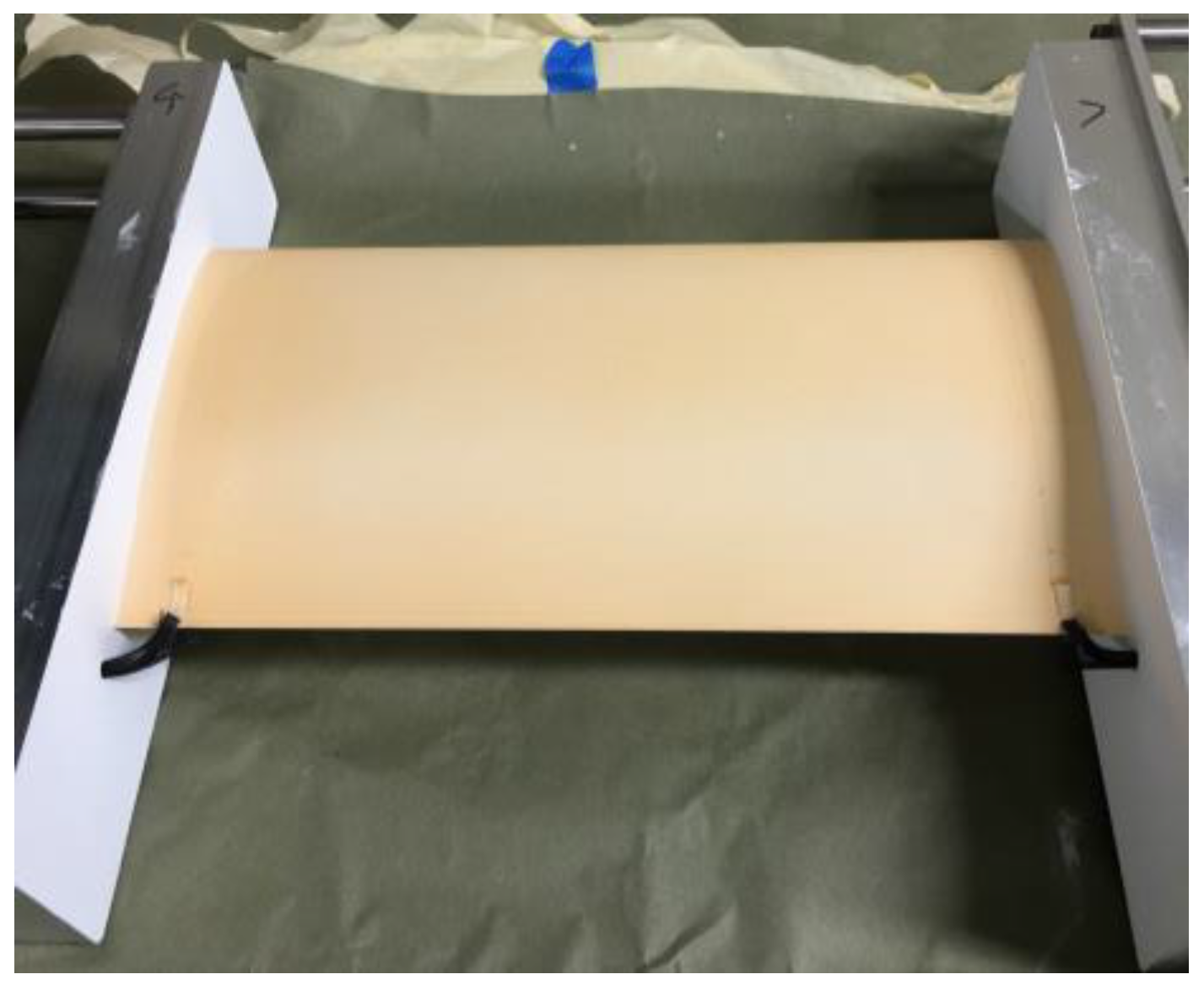
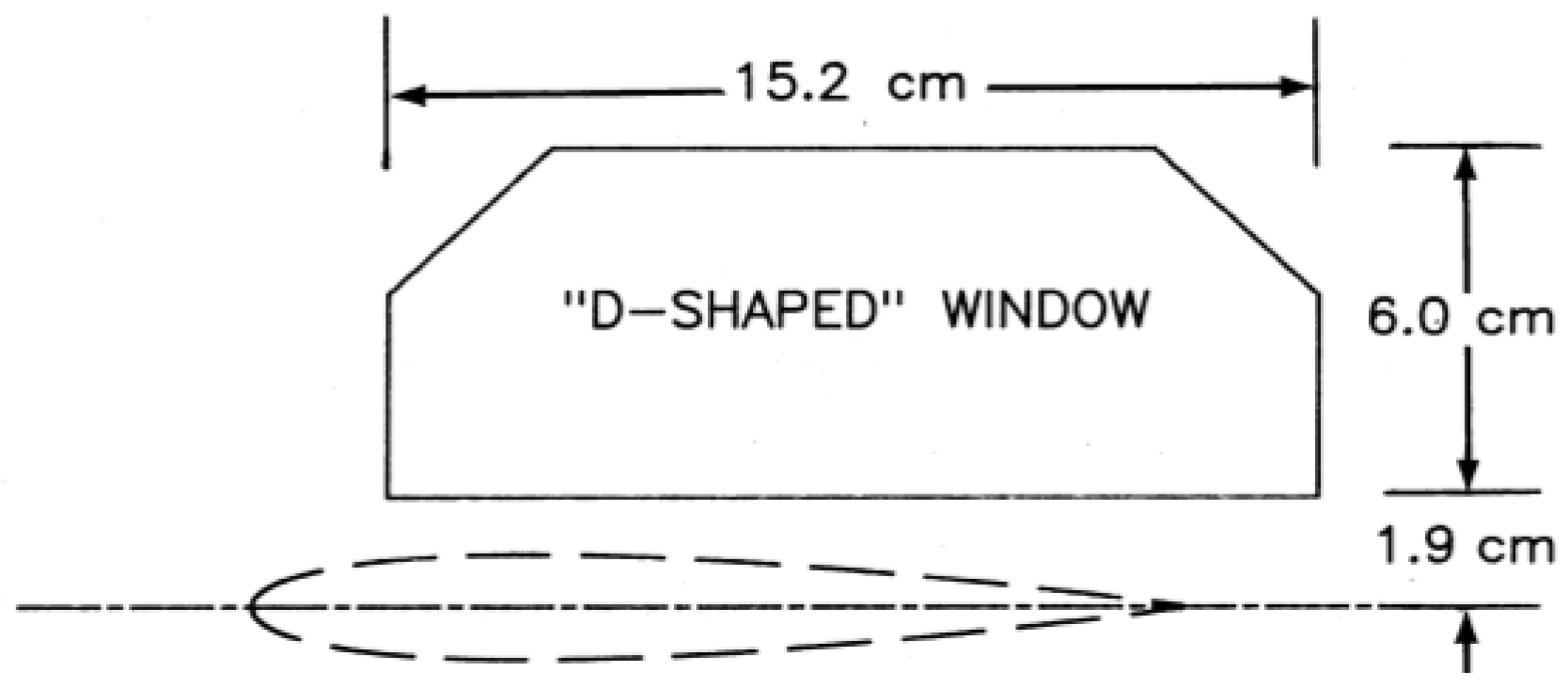
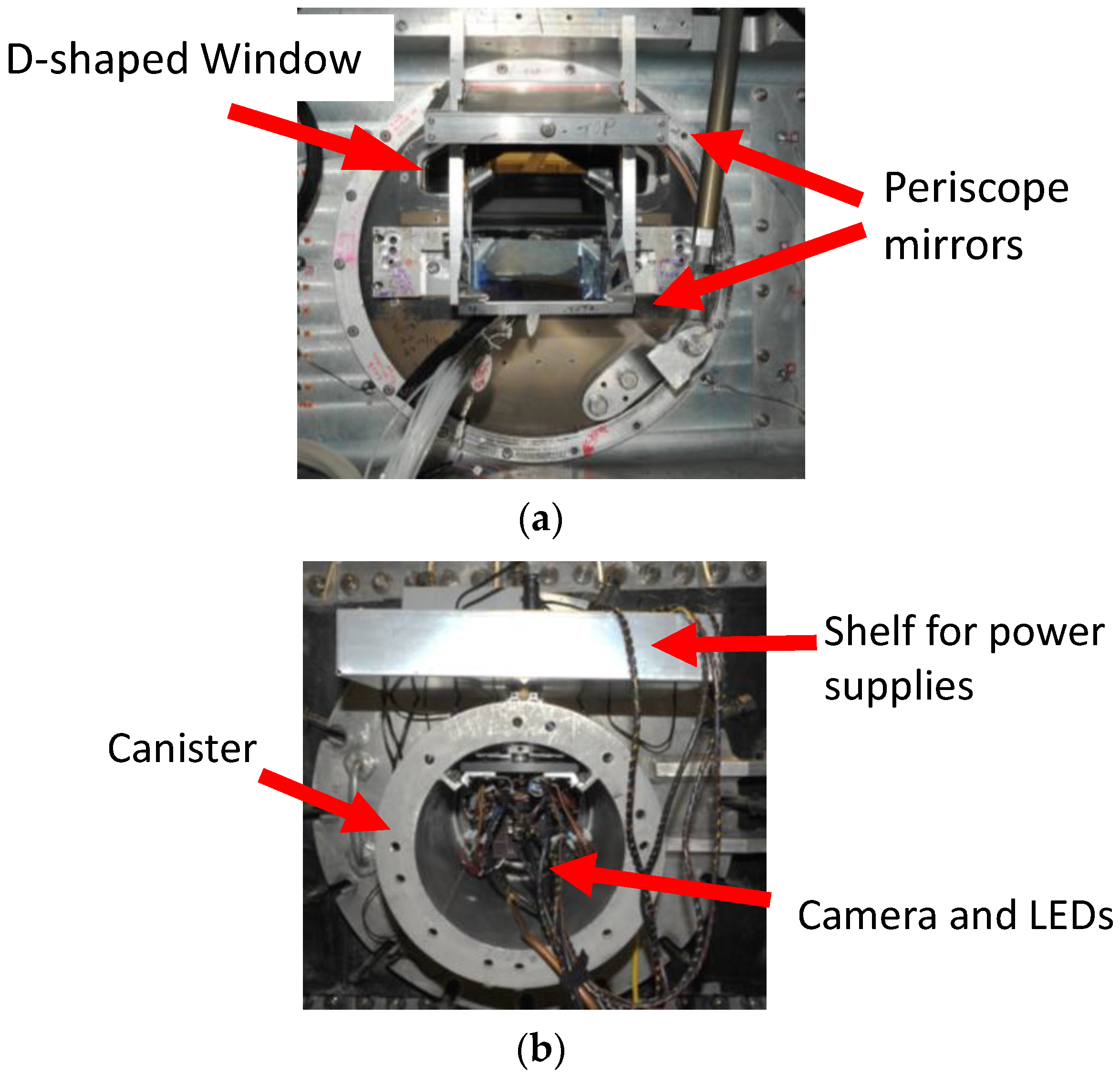
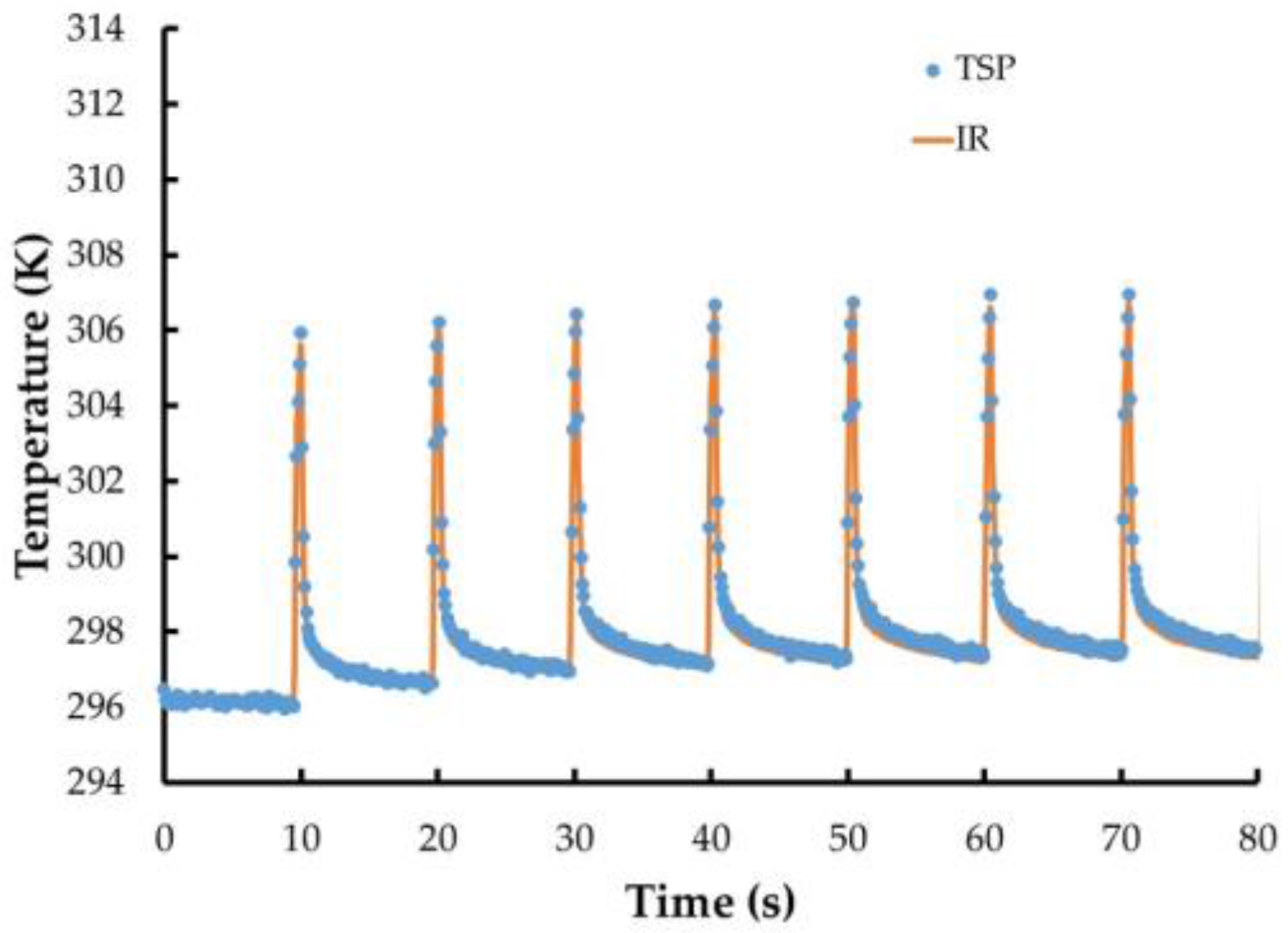
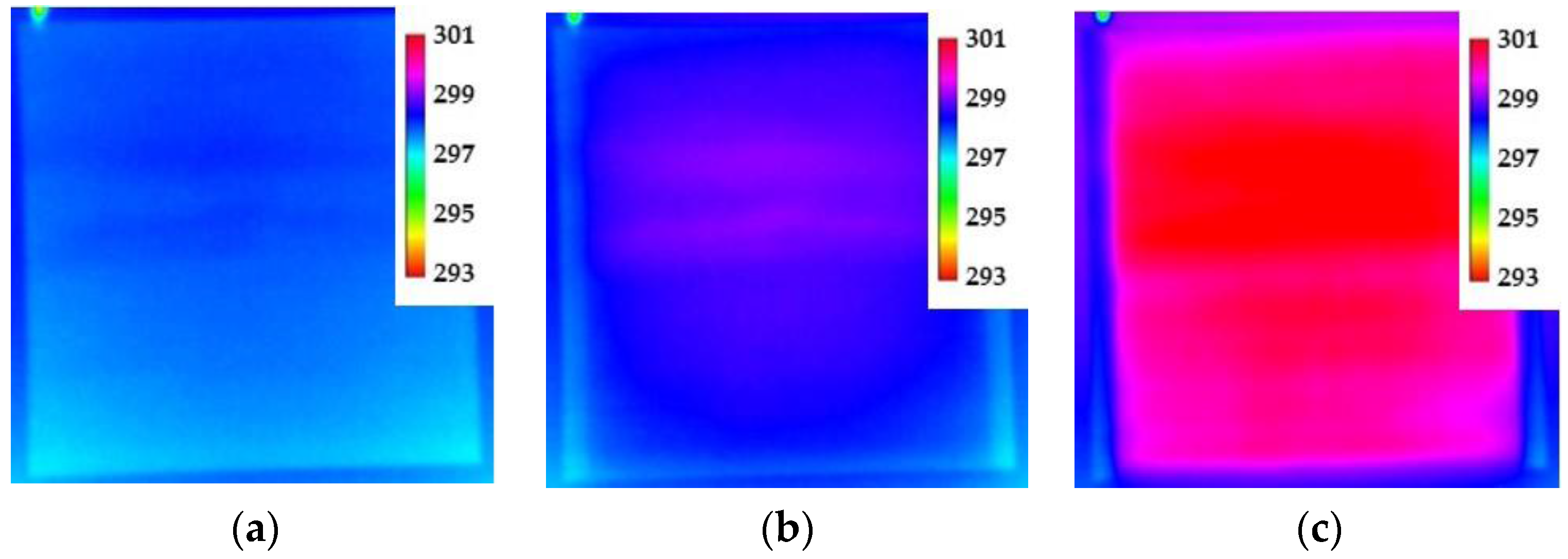
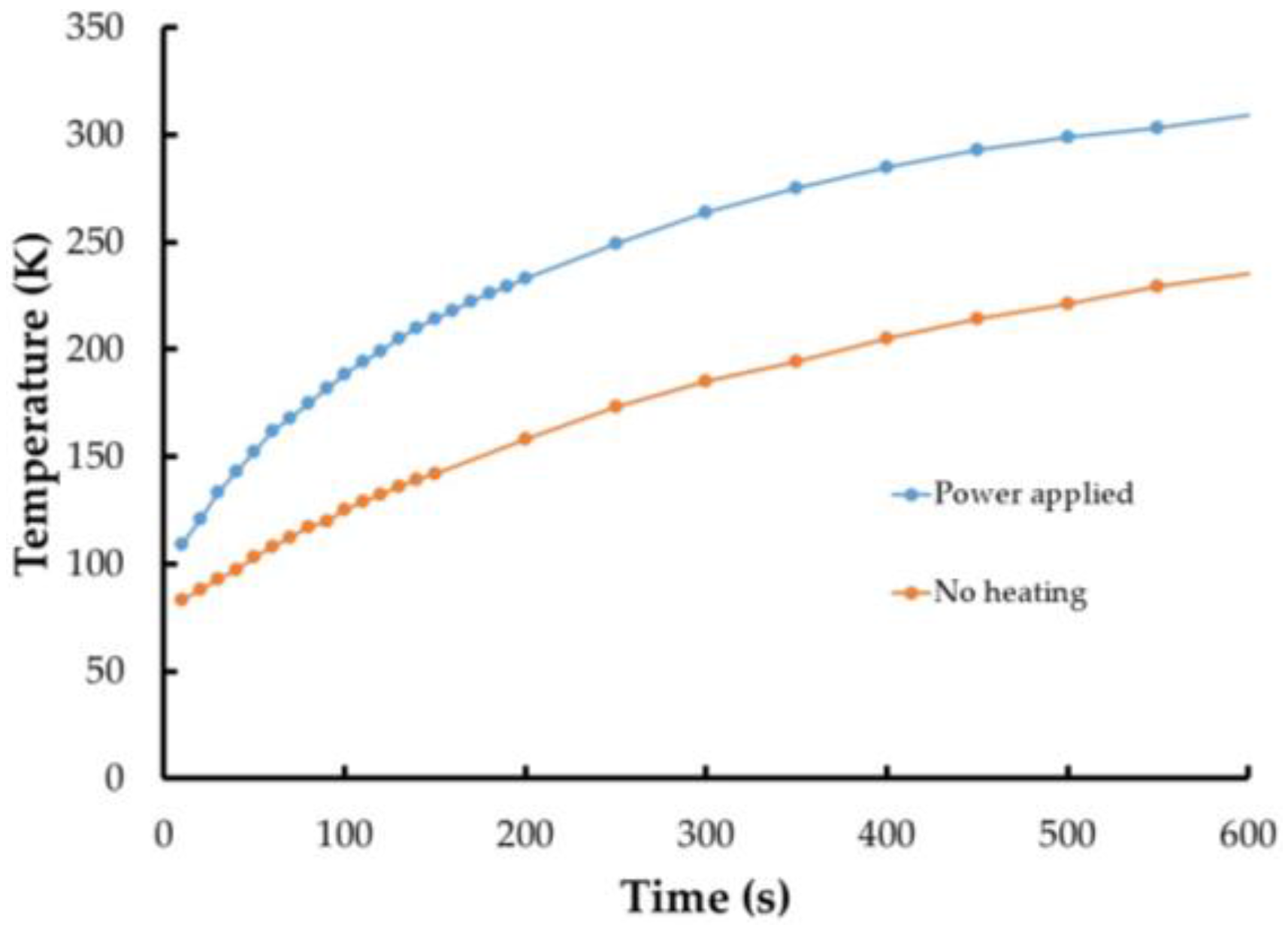

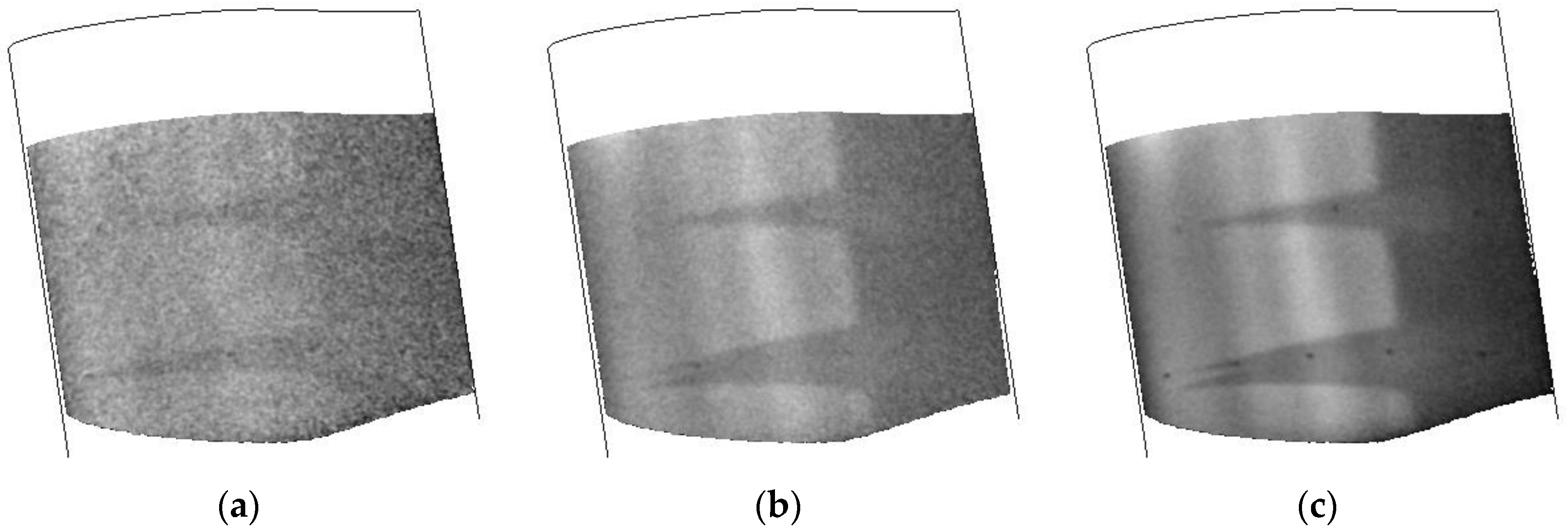
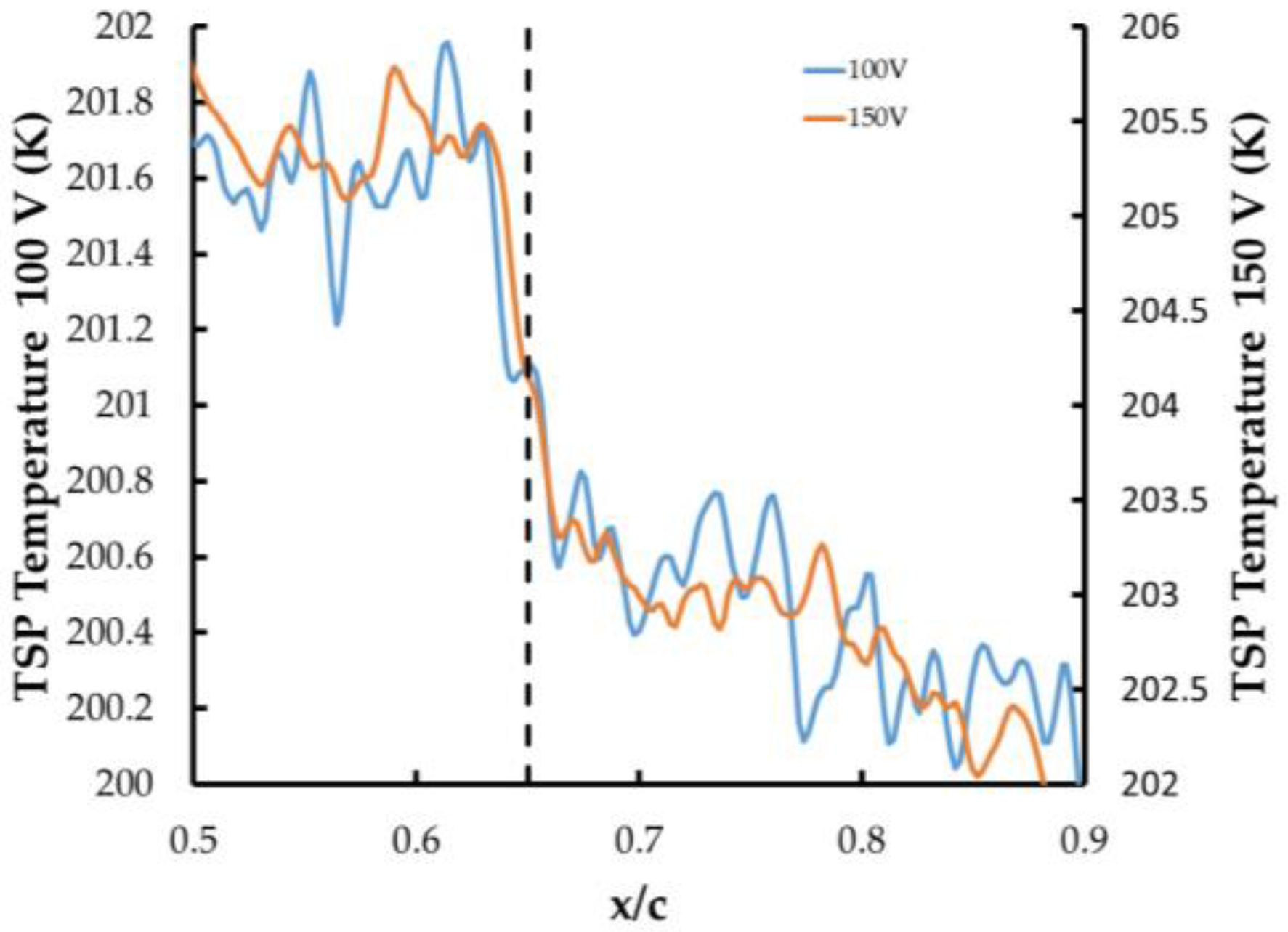

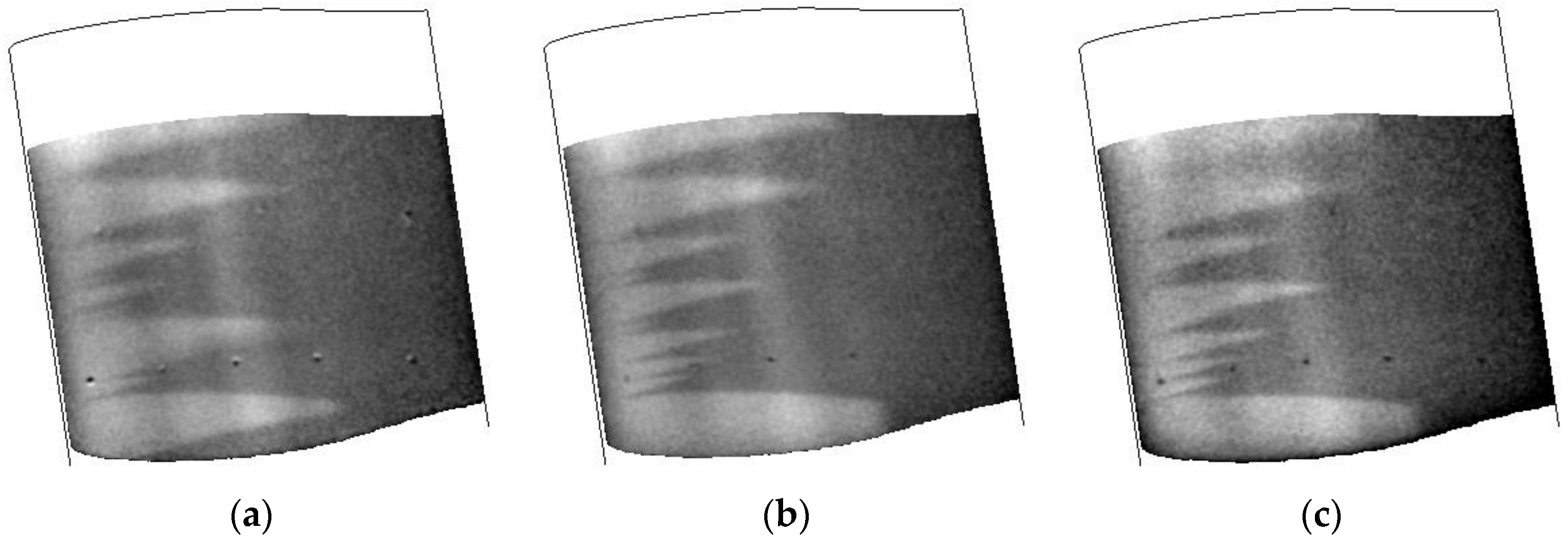
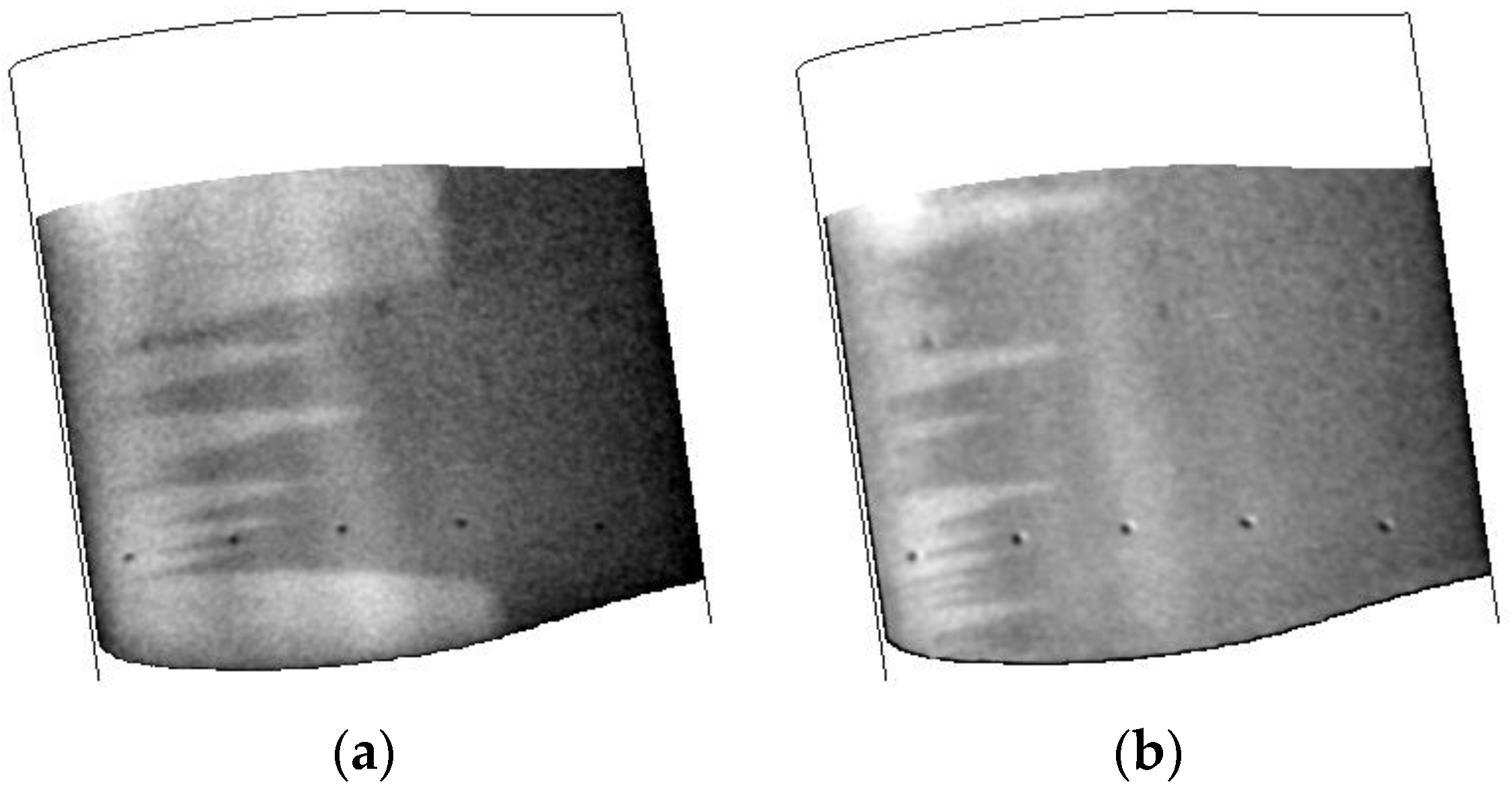
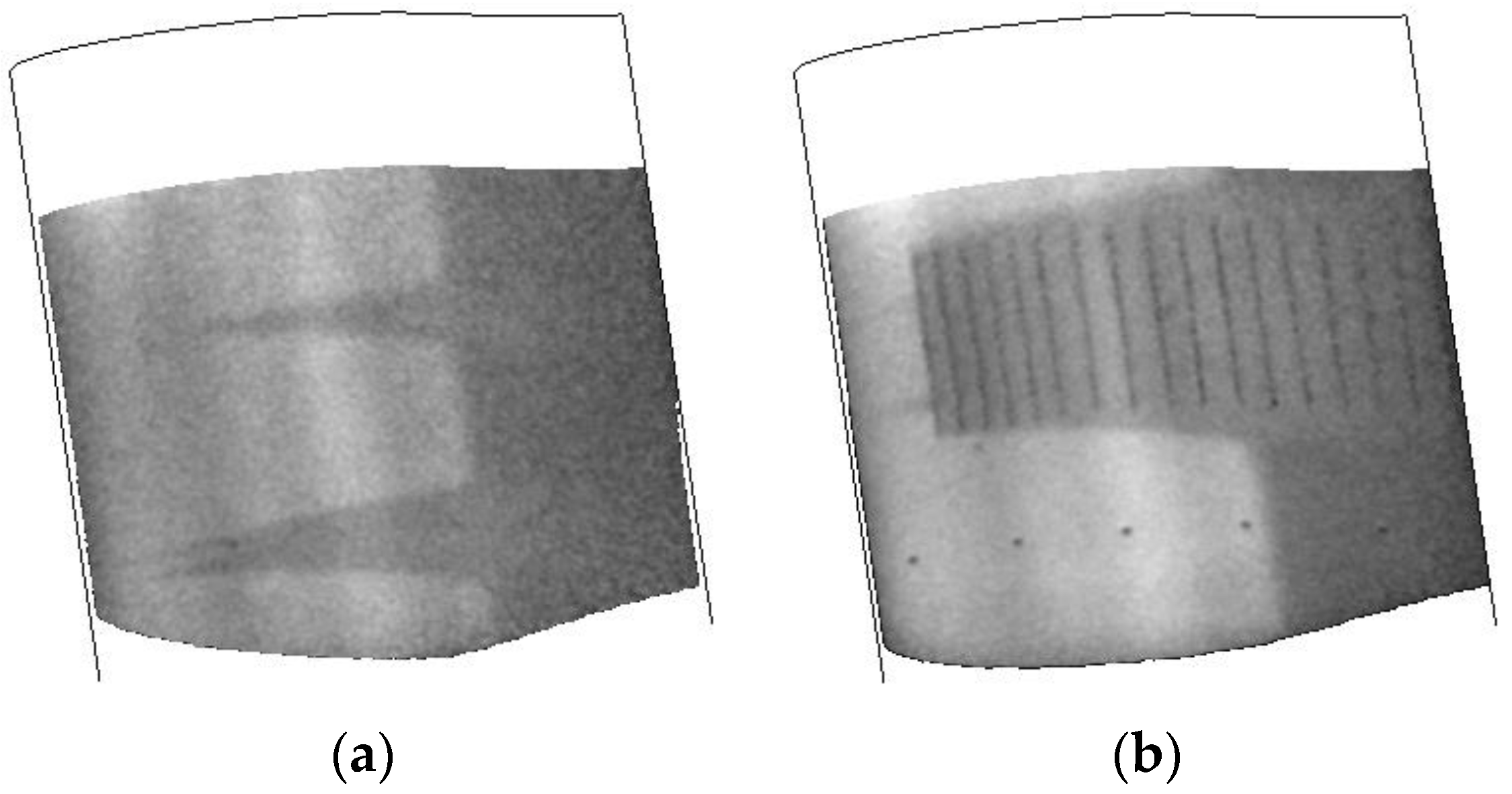

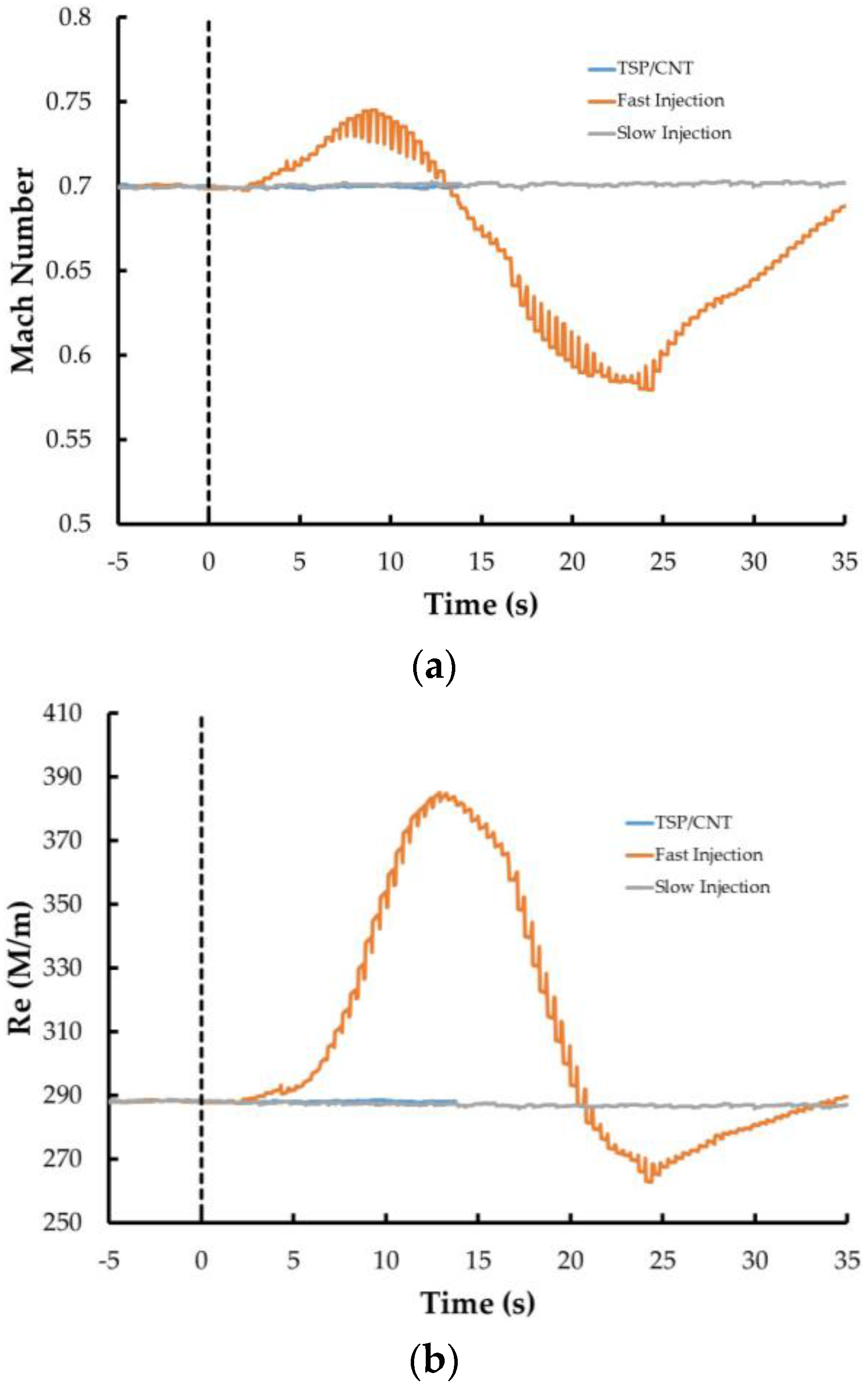
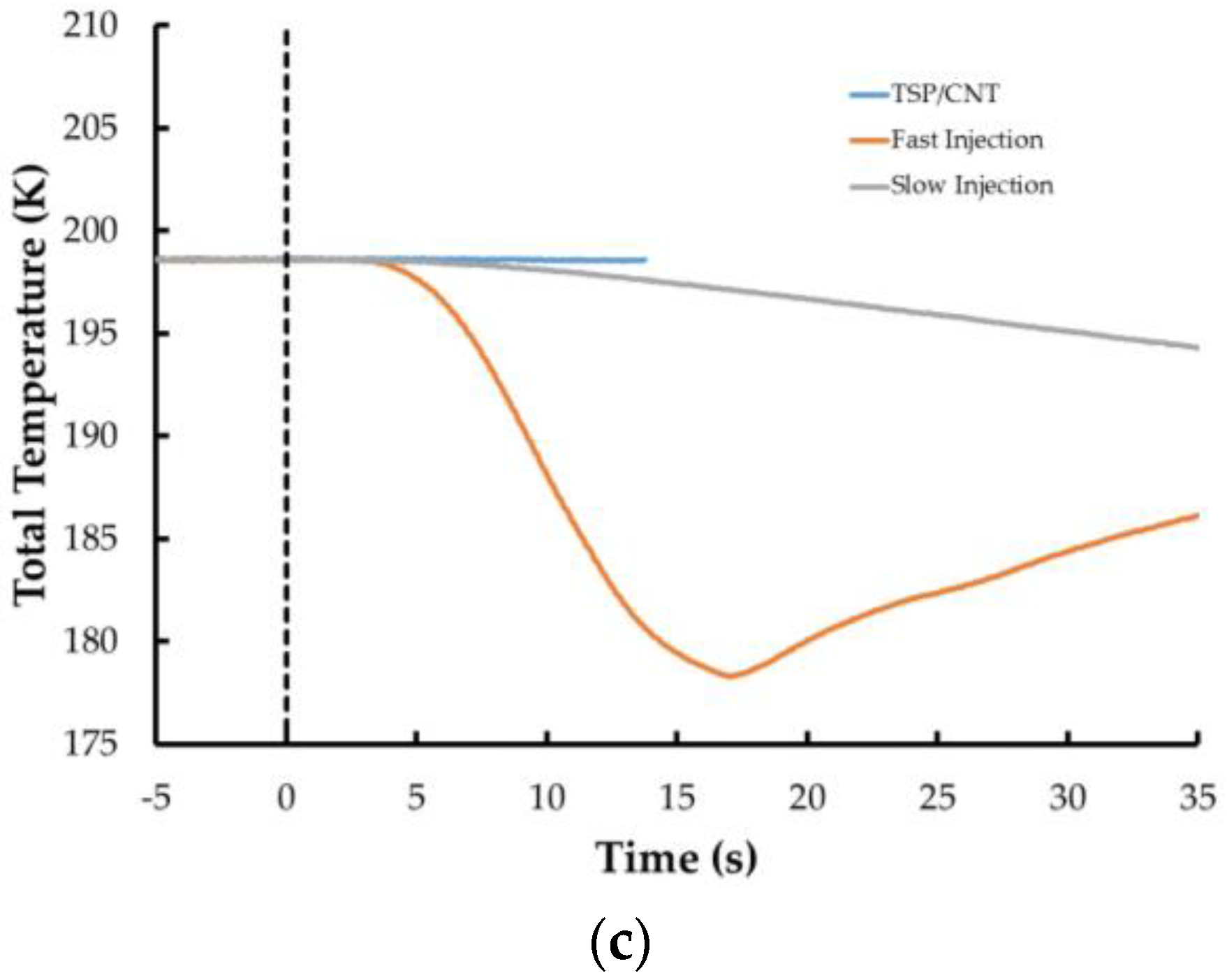
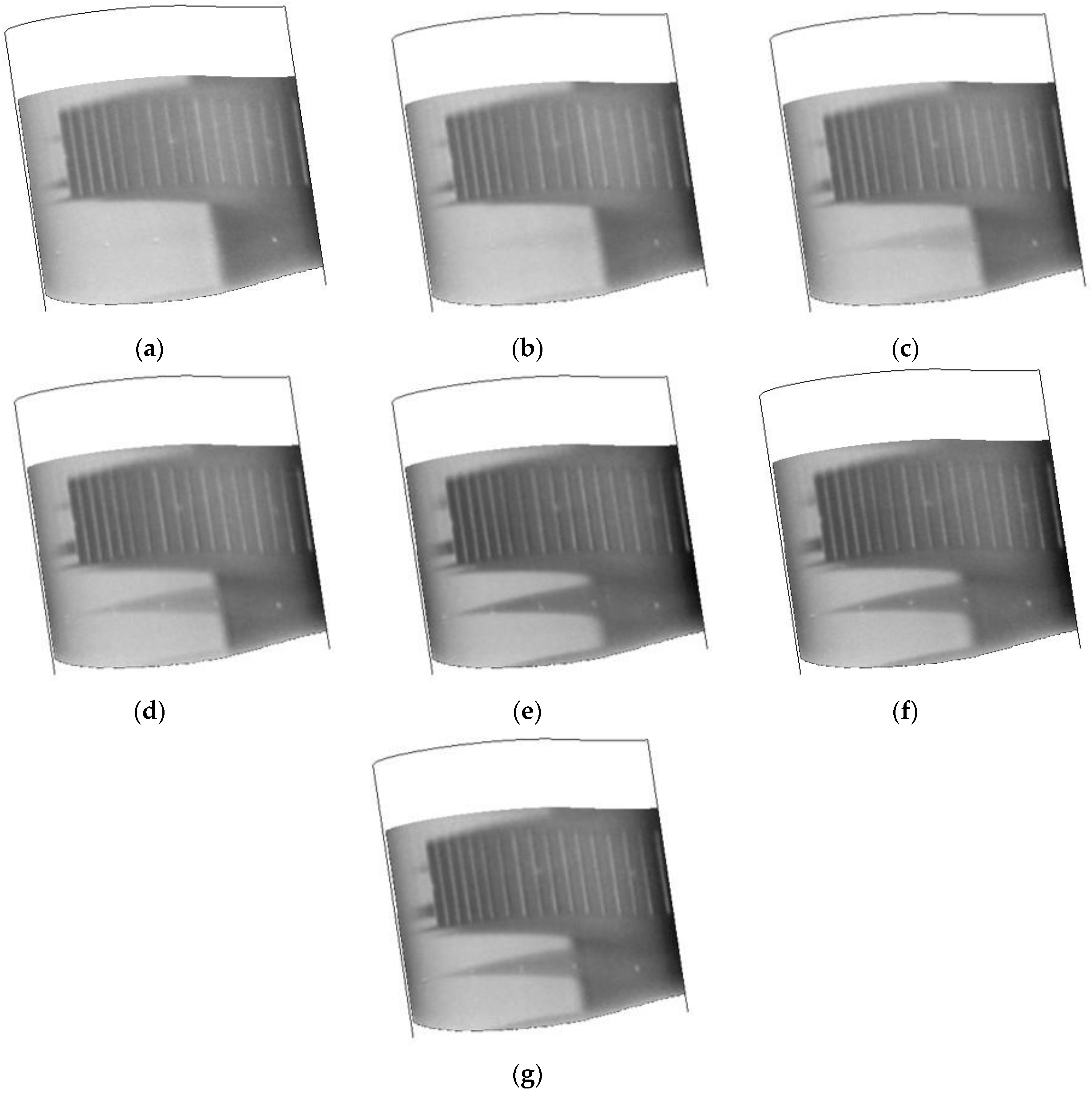
| Test Section Dimensions | 0.33 m by 0.33 m |
|---|---|
| Speed | Mach 0.1 to 0.9 |
| Reynolds Number | 3.3 to 330 M/m |
| Stagnation Temperature | 100 to 322 K |
| Stagnation Pressure | 101 to 607 kPa |
| Test gas | Nitrogen or air |
| Temperature Step Method | Maximum ΔT on Model | ΔT Transition (Laminar to Turbulent) |
|---|---|---|
| TSP/CNT | 4 K | 2 K |
| Rapid liquid nitrogen injection | −8 K | −4 K |
| Slow liquid nitrogen injection | −2.5 K | −2 K |
© 2016 by the authors; licensee MDPI, Basel, Switzerland. This article is an open access article distributed under the terms and conditions of the Creative Commons Attribution (CC-BY) license (http://creativecommons.org/licenses/by/4.0/).
Share and Cite
Goodman, K.Z.; Lipford, W.E.; Watkins, A.N. Boundary-Layer Detection at Cryogenic Conditions Using Temperature Sensitive Paint Coupled with a Carbon Nanotube Heating Layer. Sensors 2016, 16, 2062. https://doi.org/10.3390/s16122062
Goodman KZ, Lipford WE, Watkins AN. Boundary-Layer Detection at Cryogenic Conditions Using Temperature Sensitive Paint Coupled with a Carbon Nanotube Heating Layer. Sensors. 2016; 16(12):2062. https://doi.org/10.3390/s16122062
Chicago/Turabian StyleGoodman, Kyle Z., William E. Lipford, and Anthony Neal Watkins. 2016. "Boundary-Layer Detection at Cryogenic Conditions Using Temperature Sensitive Paint Coupled with a Carbon Nanotube Heating Layer" Sensors 16, no. 12: 2062. https://doi.org/10.3390/s16122062







